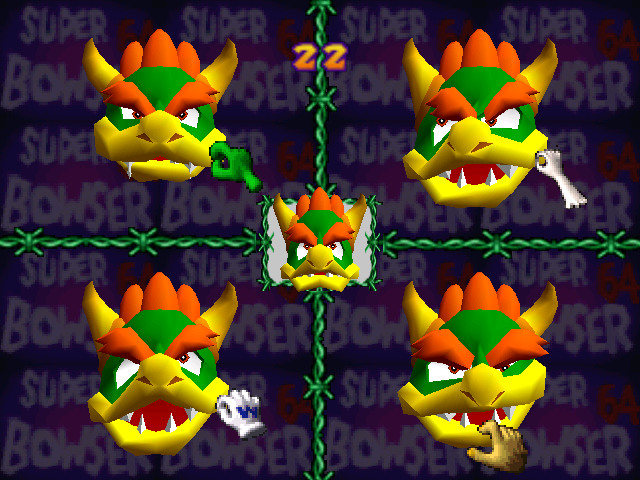Case Study - Minigame Genre
I’ve spent the last couple of years getting my bearings in nearly every department of the 3D asset creation pipeline. While these projects can be fun in isolation, I have started to become interested in the design and engineering side of game development, and would like some proof of concept tests. In an effort to keep the scope small, I am seeking inspiration from games like Mario Party, where part of the gameplay is competing in a unique win condition, ideally lasting around 2 minutes. I have a budding idea for about a dozen of these minigames, with the final project being a package of all of them.
At it’s core, I think small multiplayer games like these are at their best when the player has the following:
Main Goal is Individual: Whether it’s get to the right platform on time, claim the greatest amount of area, finish first, eliminate all other players, each player has to complete the win condition the best or the fastest.
Stay in Your Lane vs. Mess with Opponents: Players should have the option to spend their time achieving their main goal, or getting in the way of another player’s progress. This way it’s not a solo competition compared at the end, but actually a multiplayer game with risk vs. reward mechanics.
A Clear Winner: No one wants a tie, especially when the game is so quick that you could rematch with no hesitation. I think a game relying on a countdown is lazy, when you could easily continue to ramp up the difficulty of the gameplay loop until the player’s are forced to make a mistake.
Let’s take two examples from Mario Party 1 that illustrate the above ideas.
Face Lift, Mario Party 1. https://www.mariowiki.com/images/1/14/FaceLiftMP1.png
I think this minigame fails in isolation. When judging a Mario Party minigame, you have to keep in mind that it is designed on the idea of how performance rewards the player in the main board game. However, for this case study, I’m looking at the game quality if it were to be played on its own.
This game is very simple IF you’ve played it a few times before. The goal is to grab various sections of Bowser’s face in order to match the center image. There are only about 6 points of articulation, and they all have min/max bounds, so nothing crazy can be created by the player. Once you get the idea, it is easy to get somewhere around 98-100% rating, therefore resulting in many ties. This is okay in the grander context of a Mario Party match. All players who tie are given 10 coins, so nothing is lost by being as good as your opponent. For my games, I’m looking for infinite skill expression, or at least ways to hinder your competition.
Under my criteria:
Main Goal is Individual: Yes, there is a clear competition here. You are given a percent score at the end and compared to your enemies.
Stay in Your Lane vs. Mess with Opponents: No way to influence another’s performance. If your friend has perfect technique, there’s nothing you can do about it.
A Clear Winner: Almost always a tie with experienced players. Two people who can get 100% score every time would not be incentivized to play this one in a freeplay mode.
Mushroom Mix-Up, Mario Party 1. https://www.mariowiki.com/images/7/77/MushroomMix-Up.png
This is a much better idea of a game that works in isolation. It is actually one of the examples I thought of when developing my game design rules. Very simple at its core, Toad will hold up a flag that shows the color you must run to in the given amount of time. Play continues until one player is left standing. There is also the ability to stun your opponents by jumping on them, though this will also make your forward momentum unpredictable.
Under my criteria:
Main Goal is Individual: Yes, you must get your character to the specified mushroom to advance to the next round.
Stay in Your Lane vs. Mess with Opponents: I think this is executed masterfully, especially compared to everything else in Mario Party 1. Not only can you stomp on your enemies to slow them down and maybe stop them from reaching the correct platform, but doing so makes your own character’s movement uncontrollable. In this way, an experienced player could be thwarted by a messy newbie trying a bold attack, or two experienced players could leverage this mechanic to make an otherwise even skill game go in their favor faster.
A Clear Winner: While a tie is possible if remaining players lose on the same round, I think that is okay. A tie to win leaves all players deflated. A tie to lose makes players eager to go again, since you might think “if I just play better, I could get the edge.”
These three core ideas are what I would like to base each of my minigames on. Perhaps more will come up as I continue to dissect the genre. Beyond just a game design challenge, I hope to get a replicable workflow for Unreal Engine 5 that allows me to get the skeleton of a test level very quickly, to allow time for asset creation.
For my first project, I intend to make something that adds layers of complexity to the Mushroom Mix-Up game loop. As I become more comfortable with the workflow, I will start to work on ideas that delve further into original concepts. For now, having a clear visual execution is a great thing when starting from scratch.
More to come!

